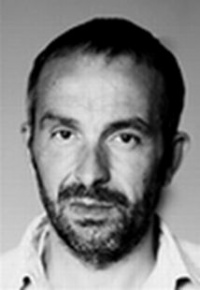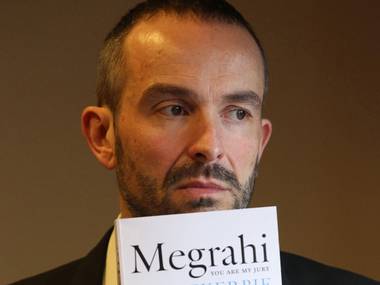Difference between revisions of "John Ashton"
(External links) |
(Add WSuser badge) |
||
| Line 1: | Line 1: | ||
| + | {{WSUser|name=John Ashton}} | ||
[[File:John_Ashton1.jpg|200px|thumb|right|John Ashton, author, journalist and film researcher]] | [[File:John_Ashton1.jpg|200px|thumb|right|John Ashton, author, journalist and film researcher]] | ||
'''John Ashton''' is a British author, journalist and film researcher who is focused on the [[Lockerbie Bombing]] of December 1988. | '''John Ashton''' is a British author, journalist and film researcher who is focused on the [[Lockerbie Bombing]] of December 1988. | ||
| Line 13: | Line 14: | ||
My objection is to the introduction of the 'drug conspiracy theory' between 1.36 and 2.16, in particular the section 1.55-2.16 and above all the blatantly fraudulent 'hotel room scene' featuring Oswald Le Winter between 2.12.50 and 02.15 (which was longer than the televised version and mentioned the character 'Lovejoy'.) | My objection is to the introduction of the 'drug conspiracy theory' between 1.36 and 2.16, in particular the section 1.55-2.16 and above all the blatantly fraudulent 'hotel room scene' featuring Oswald Le Winter between 2.12.50 and 02.15 (which was longer than the televised version and mentioned the character 'Lovejoy'.) | ||
| − | In the far briefer televised version of Steve Donahue's 'evidence' he is described as an 'undercover DEA agent' with no mention of his being a convicted trafficker. The section concerning 'Mr Goldberg' and his supposed meeting with Khald Jafaar is greatly different. | + | In the far briefer televised version of Steve Donahue's 'evidence' he is described as an 'undercover [[DEA]] agent' with no mention of his being a convicted trafficker. The section concerning 'Mr Goldberg' and his supposed meeting with Khald Jafaar is greatly different. |
While some of the 'evidence' is this forty-minute section (1.36-2.16) is demonstrably fabricated, my point is that even if these allegations of 'controlled' drug deliveries is true, is it of any relevance to the bombing? I would also point that the only evidence in the film that drugs were recovered at Tundergarth was an article in ''Private Eye'' magazine for whom John Ashton works. | While some of the 'evidence' is this forty-minute section (1.36-2.16) is demonstrably fabricated, my point is that even if these allegations of 'controlled' drug deliveries is true, is it of any relevance to the bombing? I would also point that the only evidence in the film that drugs were recovered at Tundergarth was an article in ''Private Eye'' magazine for whom John Ashton works. | ||
Revision as of 02:31, 27 March 2013
John Ashton is a British author, journalist and film researcher who is focused on the Lockerbie Bombing of December 1988.
Maltese Double Cross
John Ashton was researcher for the controversial 1994 documentary film The Maltese Double Cross - Lockerbie about the 1988 bombing of Pan Am Flight 103. The film propounded a "drug conspiracy theory" as the motive for the bombing, but this has been ridiculed by a number of commentators such as baz (aka Barry Walker):[1]
"Having watched the version televised by Channel 4 before the 'Lockerbie debate' many times I found this version of The Maltese Double Cross fascinating. It is far longer than the televised version and is significantly different.
I have long been a critic of The Maltese Double Cross and Cover-up of Convenience written by the film's researcher John Ashton and Ian Ferguson.
I have no objection to the first 1 hour and 36 minutes which was, to be honest, really very good.
My objection is to the introduction of the 'drug conspiracy theory' between 1.36 and 2.16, in particular the section 1.55-2.16 and above all the blatantly fraudulent 'hotel room scene' featuring Oswald Le Winter between 2.12.50 and 02.15 (which was longer than the televised version and mentioned the character 'Lovejoy'.)
In the far briefer televised version of Steve Donahue's 'evidence' he is described as an 'undercover DEA agent' with no mention of his being a convicted trafficker. The section concerning 'Mr Goldberg' and his supposed meeting with Khald Jafaar is greatly different.
While some of the 'evidence' is this forty-minute section (1.36-2.16) is demonstrably fabricated, my point is that even if these allegations of 'controlled' drug deliveries is true, is it of any relevance to the bombing? I would also point that the only evidence in the film that drugs were recovered at Tundergarth was an article in Private Eye magazine for whom John Ashton works.
I also note that the evidence of Linda Forsyth that Matthew Gannon was sitting in 1st class was expunged although elsewhere the film claims on two other occasions that he was (once in Le Winter's staged 'evidence'). The official version is that he was in Business Class.
My central criticism of Cover-up of Convenience is that most of the book was devoted to 'proving' this fraudulent section of the film. Without their obsession with Khalid Jafaar (which continues to this day in the pages of Private Eye) Messrs Ashton and Ferguson might have written an important book.
Indeed without the 'drug conspiracy' section The Maltese Double Cross might have been a good film. Pity Francovich didn't grasp the bomb was introduced at Heathrow."
The full 2-hour 36-minute version of the film is available here on YouTube.
By the same author
John Ashton has written the following books and articles on the Lockerbie bombing without any mention of Bernt Carlsson:
- The 2001 book "Cover-up of Convenience" by John Ashton and Ian Ferguson.[2]
- The 2012 book "Megrahi: You are my Jury" by John Ashton.[3] and,
- The 2012 article [4]
In 1988, John Ashton co-wrote a leaflet entitled Blood on their Rands: an investigation into the worldwide activities of the British Tyre & Rubber Co Ltd (BTR), with the help of the National Union of Metalworkers of South Africa.[5]
Website
John Ashton's website is here.
External links
- "John Ashton's Lockerbie dictum: 'Don't mention Bernt Carlsson'!"
- "Lockerbie Spotlight on John Ashton"
References
- ↑ "Critique of The Maltese Double Cross by 'baz'
- ↑ The show trial must go on The Observer, 17 June 2001.
- ↑ "Megrahi: You are my Jury"
- ↑ "Was Libya really behind it?"
- ↑ "Leaflet written in 1988 by John Ashton" with the help of the National Union of Metalworkers of South Africa

